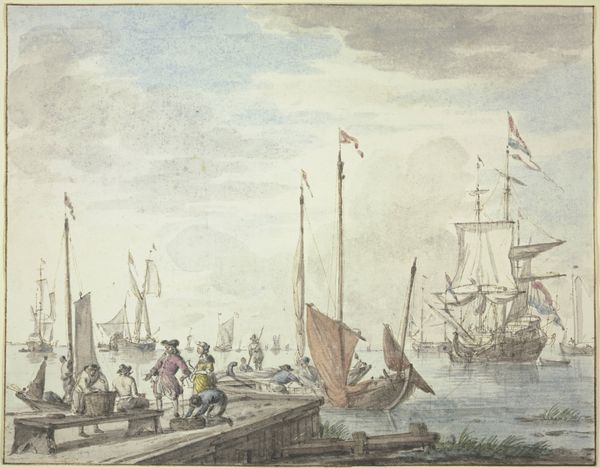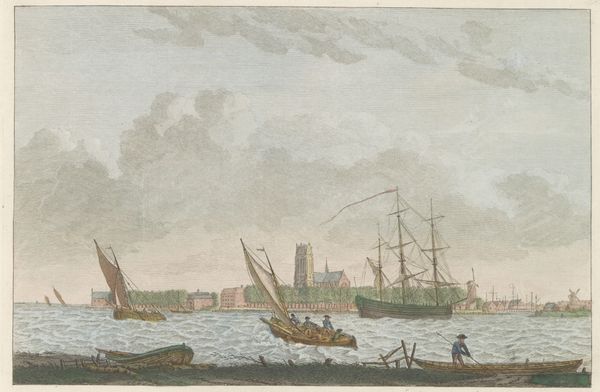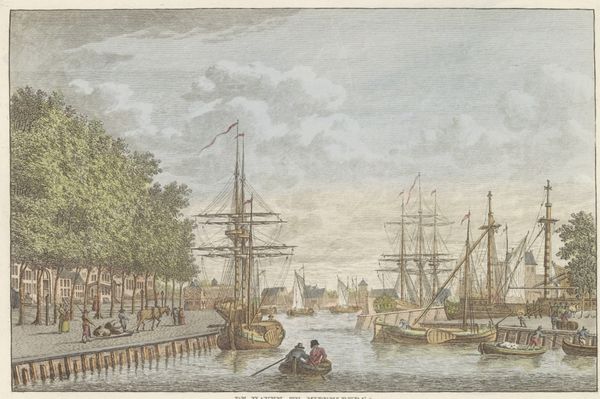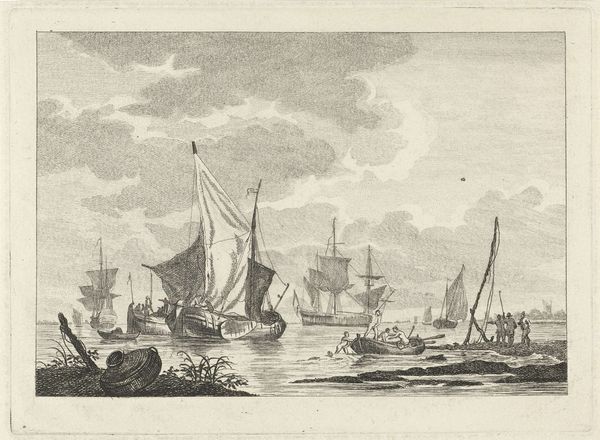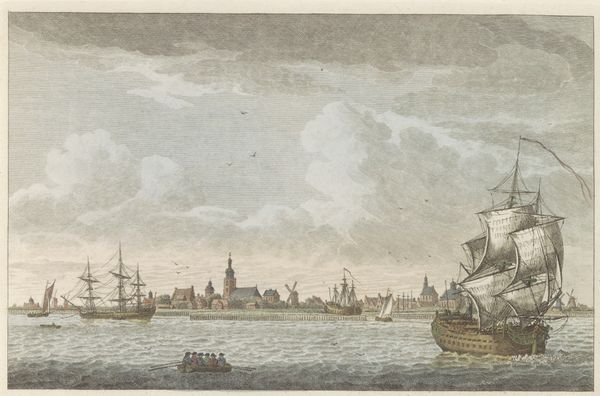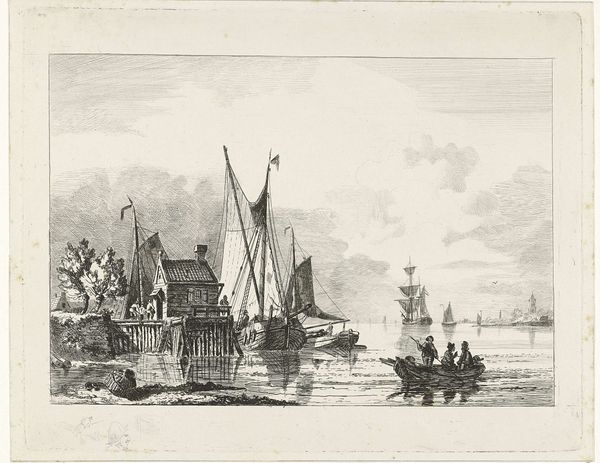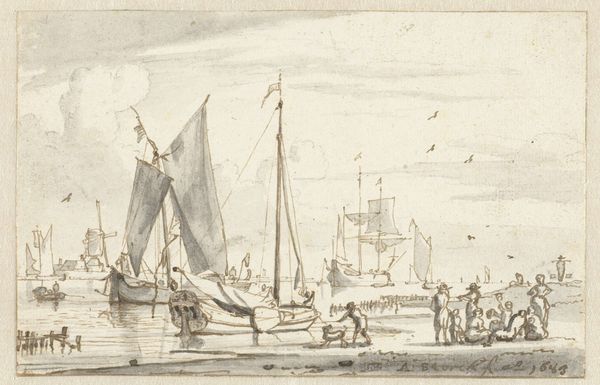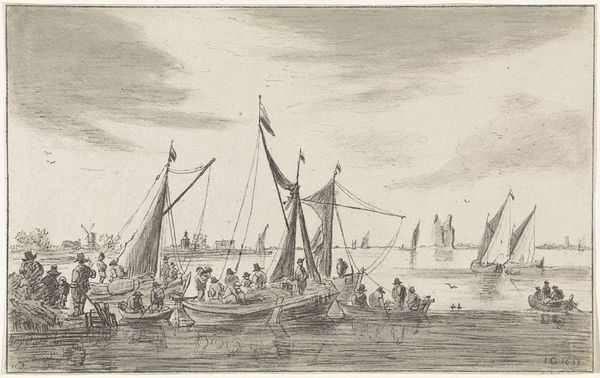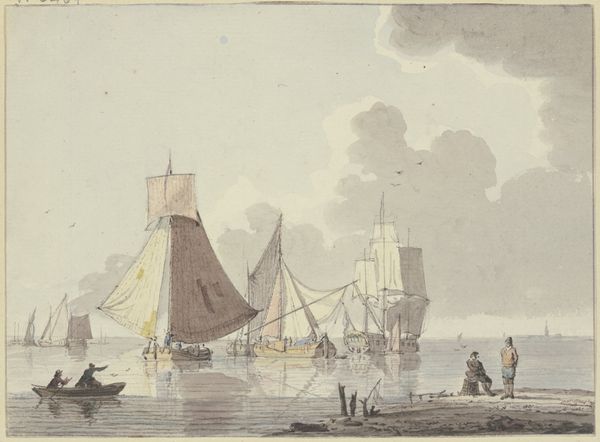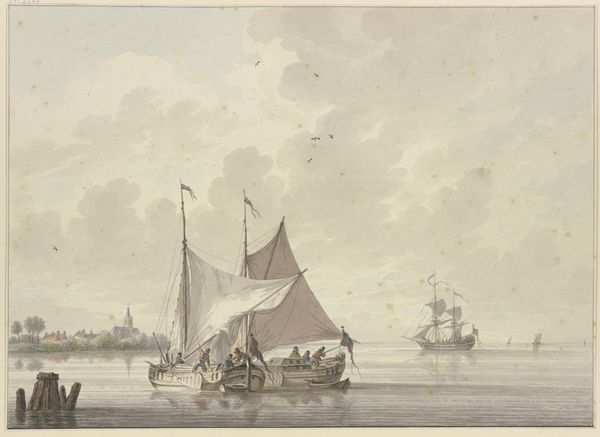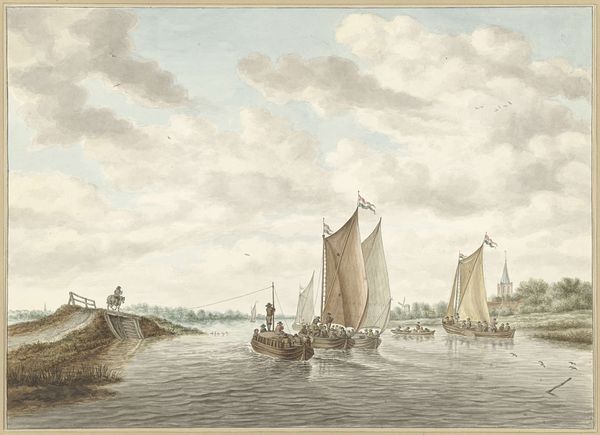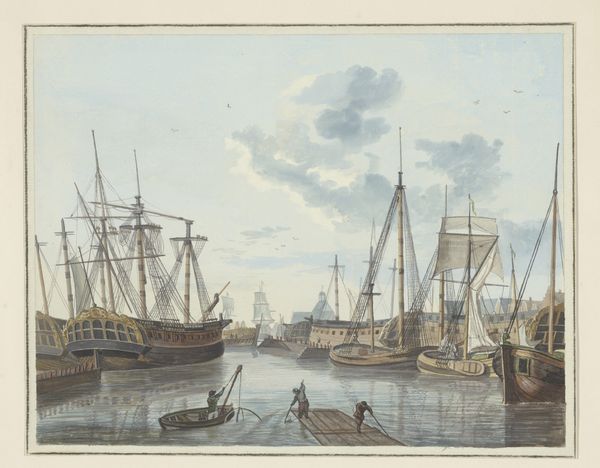
watercolor
#
dutch-golden-age
#
landscape
#
watercolor
#
coloured pencil
#
cityscape
#
watercolor
Dimensions: height 173 mm, width 248 mm
Copyright: Rijks Museum: Open Domain
Editor: Here we have "De Zaan bij Wormerveer," likely from around 1790, attributed to Carel Frederik Bendorp. It’s a watercolor showing a busy waterside scene, dotted with windmills. What strikes me is how the scene captures the everyday rhythm of life, labor in the presence of industrial technology. How do you see this piece? Curator: Well, focusing on the materials and process, this watercolor presents a fascinating look at 18th-century Dutch industry and its portrayal. Consider the paper itself: its sourcing, preparation, and how it absorbs the pigment all speak to the means of artistic production. More interestingly, note how Bendorp positions the windmills – these early machines – alongside the manual labor of the figures on the docks. Do you think it elevates them or simply depicts co-existence? Editor: That's interesting. I hadn’t thought about the choice of watercolor and paper as part of the commentary, and find this aspect revealing in relation to your perspective on materialism and art. I wonder whether the somewhat softened effect of watercolor normalizes the presence of windmills by depicting labour, which after all is human effort. Curator: Exactly. Watercolor, often associated with amateur or topographical art, is employed here to depict the mechanics of Dutch trade, seemingly contradicting traditional "high art." How does that challenge the usual hierarchy separating art from craft, labor from leisure? The level of detail here also indicates that a large segment of the society engaged in those industries. The print shows their involvement in producing resources and technologies and shows us the beginning of contemporary culture that uses the output of these windmills to trade goods all over the world. Editor: It reframes the scene, definitely. Now it feels less like a passive landscape and more like an active representation of production. I’m starting to see how Bendorp is presenting not just a scene, but an interconnected system of materials, labor, and industry. Curator: And, thinking more broadly, how does the consumption of art – watercolors specifically at this time, shape what is and what is not considered important, or worthy of depicting? Editor: That's a great question to consider. This discussion has shifted my perspective. I initially saw a pretty waterside scene, but now I recognize the layers of meaning embedded in the materials and the way labor is portrayed. Thank you for opening up these ways of seeing the picture, especially from the materialist viewpoint. Curator: It's been insightful for me as well, rethinking the socio-economic conditions of its production.
Comments
No comments
Be the first to comment and join the conversation on the ultimate creative platform.
